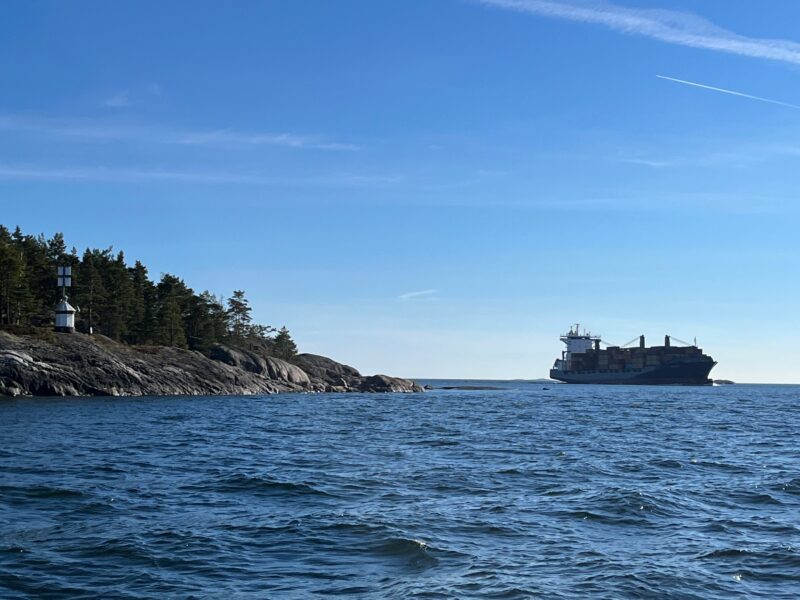September 1, 2022
NAPA outlines collaborative pathways for safer and faster maritime decarbonization

Helsinki (Finland), 1st September 2022: As the maritime industry steps up collaboration to address its decarbonization challenge, making it work in practice will rely on digital tools that are already available today. Leaders at NAPA, a global digital technology provider for the maritime sector, underline that data is central to effective collaboration, supporting the safe and successful introduction of technologies that help reduce emissions and improve sustainability.
At SMM 2022 in Hamburg – one of the world’s largest maritime trade fairs – NAPA will present real-life examples of successful collaborative decarbonization initiatives, showcasing how they work in practice and highlighting the potential of key lessons for the broader industry.
Calls for greater industry collaboration to speed up the energy transition continue to grow in volume, often without tangible mechanisms to support a collective approach. To address this challenge, the CEO of NAPA, Mikko Kuosa, emphasizes the vital role of digital tools in overcoming obstacles that stand in the way of greater emissions reductions across the industry.
These range from innovative contractual frameworks supported by real-time data to solve the split incentives problem, to advanced 3D models that help naval engineers, tech developers, shipowners and class societies speed up design innovation, to stability software that enables crews and onshore teams to collaborate for safer and more efficient operations.
Mikko Kuosa, CEO of NAPA, said: “We collectively agree that more collaboration needs to happen to deliver shipping’s sustainability transition at speed, but how we better collaborate often remains unclear. Thankfully the technology needed to make collaboration work in practice already exists, from early 3D design models to cloud-based solutions that enable information sharing and data collection on unprecedented levels. Our work at NAPA is helping stakeholders resolve the tensions between safety and efficiency, overcome misaligned incentives to optimize voyages, and bringing shipyards and class together to innovate faster. Our experience shows that when done right, collaboration can truly be a win-win situation, where all partners improve their outcomes, gain clarity, future-proof their assets, and contribute to the emissions reductions that are urgently needed for the planet.”
NAPA’s Executive Vice President for Safety Solutions Esa Henttinen, added that big data plays a key role in helping the industry gain and action insights to deploy decarbonization innovations without compromising seafarer and passenger safety.
“As the industry is on a fast track to cut its environmental footprint with new technology, ship safety and stability must be prerequisites for a smooth transition and adoption of greener technology, both for newbuilds and existing vessels. Be it alternative fuels, carbon capturing, navigational tech, or performance optimization tools – new innovations will have to be implemented in tandem with operational safety for their successful implementation. For instance, retrofitting new equipment, such as newer fuel-efficient engines, batteries, etc., for greener operations will need to be implemented keeping in mind its effect on the vessel’s long-term safety profile. Similarly, when alternative fuels are introduced, the fuel-carrying capacity and its optimization will be a critical factor in voyage and safety planning,” said Mr Henttinen.
Among innovative decarbonization partnerships, NAPA’s presence at SMM will feature Blue Visby, a recently launched industry coalition that combines an innovative contractual framework that addresses the problems of “split incentives”, with state-of-the-art digital technology that optimizes arrivals for a group of ships travelling to the same port, enabling them to reduce their emissions by 15%.
Another example that will be showcased at SMM is NAPA Stability, a next-generation loading computer that helps crew optimize the balance between efficiency and safety with deadweight management. Optimizing parameters such as fuel bunkering, water bunkering, hull and trim optimization, the solution helps crew collaborate to make voyages more efficient while maintaining ship safety, stability, and other operational parameters. The role of cloud-based solutions such as NAPA Fleet Intelligence will also be centerstage, showing how they can facilitate real-time data sharing and collaboration between ship and shoreside teams, leading to better resource utilization, transparency between all stakeholders to expedite and improve decision-making, and making safety and sustainability a shared responsibility.
NAPA experts will also present:
- NAPA’s solutions for 3D based ship design which facilitate collaboration and information sharing between naval engineers, tech developers, class societies and other stakeholders in the ship design process, helping them create and iterate the more efficient designs needed by the industry. This is also key to improving the efficiency of the design process, helping all stakeholders save time and money
- NAPA Voyage Optimization, which enables teams to optimize routes and speed profiles for any sea passage, taking into account the ship’s unique profile and weather conditions, which helps minimize fuel consumption and emissions, supporting compliance with CII regulations, while ensuring safety.
- NAPA Logbook, which digitalizes mandatory onboard record-keeping, thereby easing compliance and administrative work while also keeping shoreside teams informed about the fleet’s daily operations, bringing facts in the form of customized reports and helping decision-making for better operational efficiency.
*****
About NAPA
In its over 30 years of operation, NAPA has become a global leader in developing and scaling software, services and data analysis for a safer, smarter, and more sustainable maritime industry. NAPA operates globally, with 190 employees in eleven countries in Europe, Asia and the Americas, and has a turnover of €23.8 million. To date, NAPA has 420 user organizations for its design solutions, nearly 3,000 installations onboard vessels and a growing number of subscribers for its cloud-based fleet services.
Media enquiries:
Peter Jackson
BLUE Communications
+44 (0) 775 739 3786
peter.jackson@blue-comms.com